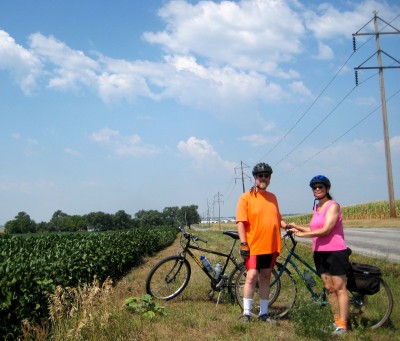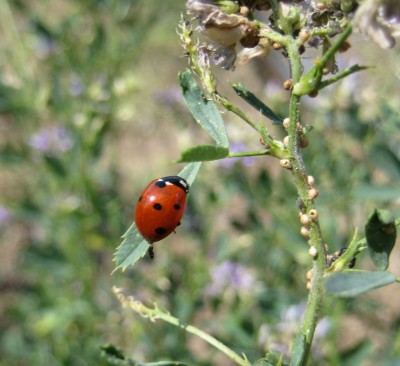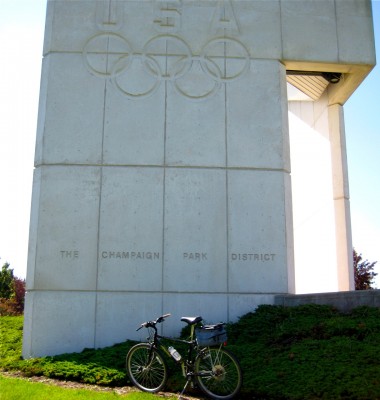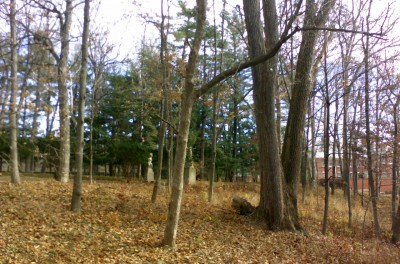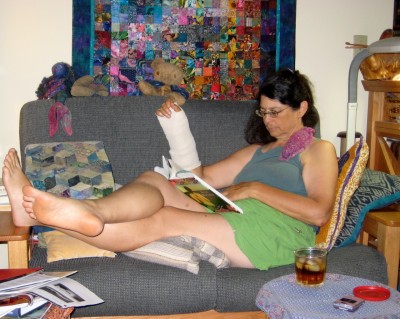I have been on-and-off reading about “paleo” diet and exercise programs (also called “primal”).
I think there’s a lot to paleo, on an evolutionary basis. On the other hand, there are an awful lot of post-paleo lifestyles that have proven to be entirely successful, in the sense that generations of people have eaten all manner of particular diets and been healthy. (Native Americans ate corn, beans, and squash. Scots ate oats and kale. Lots of people ate rice and lentils.) Given that, and the fact that paleo diet programs doesn’t match well with what I like to eat, I’ve only paid a bit of attention to them. Basically, I’ve let them reinforce my preconceived notions.
I have a similarly divided appreciation of paleo exercise programs, but there I think I’ve worked out what was bugging me.
The half I agreed with is that very short bursts of very intense activity should be a key part of an exercise program. I’ve only made limited moves to incorporate this insight into my own workouts, but only because those sorts of intense bursts are hard.
I suspect it would be a really good change to compress my current 20-minute lifting workout into 10 minutes, which I could do if I really hustled between machines and counted the first set of the three leg exercises that I do as a warm-up.
To do so would require some additional mental toughness. It’s really hard to jump off the leg extension machine with your quads burning, and then jump on the leg curl machine and make your hamstrings feel the same way, and then hurry on to the leg press. Taking an extra thirty or forty seconds between machines to recover is a lot easier. (Not to mention inevitable, if you’re working out in a fitness center where you have to adjust the seat and set the weights on each machine.)
The half I disagreed with is the half that seems to dismiss endurance exercise.
Now, it may be that my reading of paleo exercise programs has simply been so cursory that I missed the paleo version of endurance exercise. But it sure seems to me like a large fraction of the paleo folks don’t merely dismiss endurance exercise, they actively disdain it.
That puzzled me, because it seems to me that the paleo human was the quintessential endurance machine.
As I say, I think I’ve come to understand the objection, which is that you can’t do high-intensity endurance exercise unless you eat loads of carbs. The paleo folks think you should do endurance exercise, as long as you keep the intensity level at a level where you can perform on a low-carb diet. Further, they seem to think that the appropriate level supports walking or hiking, but doesn’t support endurance running.
That’s crazy, although it’s understandable. The modern way of training to run is all about prompting the body to mobilize glycogen stores, by depleting those stores and then eating a high-carb diet to replenish and boost them.
That is not the only way to run. You can also engage in endurance activity powered mainly by fat stores.
Begin bonus anecdote:
When I was in high school, I decided to bicycle to Saugatuck, see a play, camp out overnight, and ride home the next day. I didn’t have a cyclometer in those days, and have always claimed that the distance was 75 miles each way. Google Maps tells me that my route (or very close to it) is 69.3 miles. Close enough.
I knew nothing about carb or fat metabolism. I made no plans to get food along the way, and in fact ate very little.
I headed out early in the morning, did just fine for a bit more than the 36 mile I was used to riding, and then bonked at about mile 40. (Bonking is what cyclists call it when you exhaust your body’s glycogen stores. It’s the same thing marathoners call “hitting the wall.”)
I was exhausted. My speed dropped from 14–17 mph down to 7–8 mph. And it stayed there.
That’s the important part of this anecdote. It stayed there. I rode another 30 miles or so that way. I rode it at less than 8 mph, but I rode it. I got up the next morning, still exhausted, got back on my bike, and rode a few miles to a breakfast spot and ate my only proper meal of the whole trip. It didn’t help much. I rode the whole way home at 7–8 mph.
End bonus anecdote.
If you haven’t trained your body to use fat stores for endurance activity, you’ll be pretty slow—as I was on my ride. And you’ll never be fast the way someone who has trained to build up glycogen stores can be. But with a modest amount of training, you can be plenty fast enough to run.
There are times when it is convenient to be able to run for an extended period. If you want to have that capability, you need to run—and not just occasional short sprints during your walks.
We don’t have much direct evidence of what paleolithic humans actually did, but I have no doubt that, in addition to walking a lot, they ran a lot. The human body is just too well adapted for long-distance running for it not to have been a key capability over an evolutionarily long period.
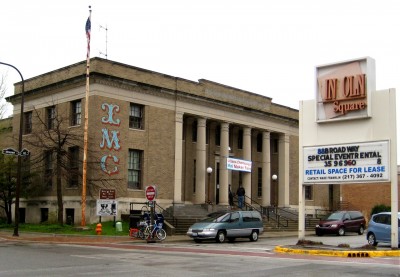 Jackie and I made good use of the Bike Project last week.
Jackie and I made good use of the Bike Project last week.


